I want to identify a rechargeable battery pack from inside an old portable hard-drive.
It is unlabelled. (I ripped open the blue covering - it isn't labelled on the internal metal cover either.)
Battery is ~55m x ~33m x ~5mm - so relatively flat. The plug is 3-4 mm wide.
Device takes +5V DC, so I imagine that is the charging voltage. One part of the circuit takes 3.3V DC, so I imagine that's the output voltage.
How is this battery specified?

